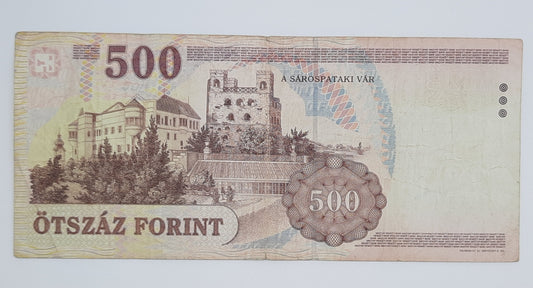Look up Country, Denomination or Year
-
1975 Hungary, Magyar Nemzeti Bank - 20 Hungarian Forint HUF Banknote Serial No. C954 123941 P-169f
Vendor:notescounterRegular price £3.49 GBPRegular priceUnit price / per -
2002 Hungary, Magyar Nemzeti Bank - 500 Hungarian Forint HUF Banknote Serial No. EA 4011356 P-188b
Vendor:notescounterRegular price £2.49 GBPRegular priceUnit price / per
Collection: Hungary
Hungarian Banknotes – A Collector’s Gateway to Centuries of Economic Heritage
Hungary's currency history is a fascinating journey through medieval kingdoms, imperial rule, economic turmoil, and modern financial stability. From the early silver denars of Hungarian monarchs to the hyperinflated pengő and today’s secure forint banknotes, Hungary’s monetary evolution reflects its rich political and economic transformations—making it a compelling collection for numismatics enthusiasts.
Why Collect Hungarian Banknotes?
🔹 Deep Historical Roots – Spanning medieval coinage, Austro-Hungarian banknotes, and modern forint issues. 🔹 Unique Designs – Featuring kings, revolutionaries, architectural masterpieces, and intricate artistic engravings. 🔹 Rare & Valuable Pieces – Includes hyperinflation-era banknotes, early korona and pengő issues, and limited-edition forints. 🔹 Certified Authenticity – Professionally graded banknotes guarantee historical accuracy and quality.
Key Currency Eras
🟢 Medieval Hungarian Coinage (10th-15th Century) – Early currency included the silver denar, first minted under King Stephen I (c. 1000 AD). Hungarian rulers often featured on these coins, solidifying their authority through monetary circulation. The golden forint was introduced in the 14th century, modeled after the Florentine florin, showcasing Hungary’s engagement in European trade. 🟢 Austro-Hungarian Korona (1892-1927) – After the Austro-Hungarian Compromise of 1867, Hungary shared the korona currency with Austria. These banknotes, issued by the Austro-Hungarian Bank, reflected both Hungarian and Austrian economic integration but were discontinued after World War I. 🟢 Hungarian Pengő (1927-1946) – Replacing the korona, the pengő became Hungary’s currency, initially stable but later infamous for the worst recorded hyperinflation in history. By 1946, banknotes reached denominations in the trillions, making them remarkable collectibles today. 🟢 Hungarian Forint (1946-Present) – Introduced to stabilize the economy post-WWII, the forint remains Hungary’s official currency. Modern banknotes showcase national figures such as King Saint Stephen, Lajos Kossuth, and landmarks like the Chain Bridge and Hungarian Parliament. Security features have evolved significantly, making today’s forints among the most advanced banknotes in Europe.
Expand Your Collection with Hungarian Banknotes
Whether you’re fascinated by medieval silver coins, intrigued by the economic lessons of hyperinflation, or seeking beautifully crafted forint notes, Hungarian currency provides a tangible link to centuries of political and financial history.



